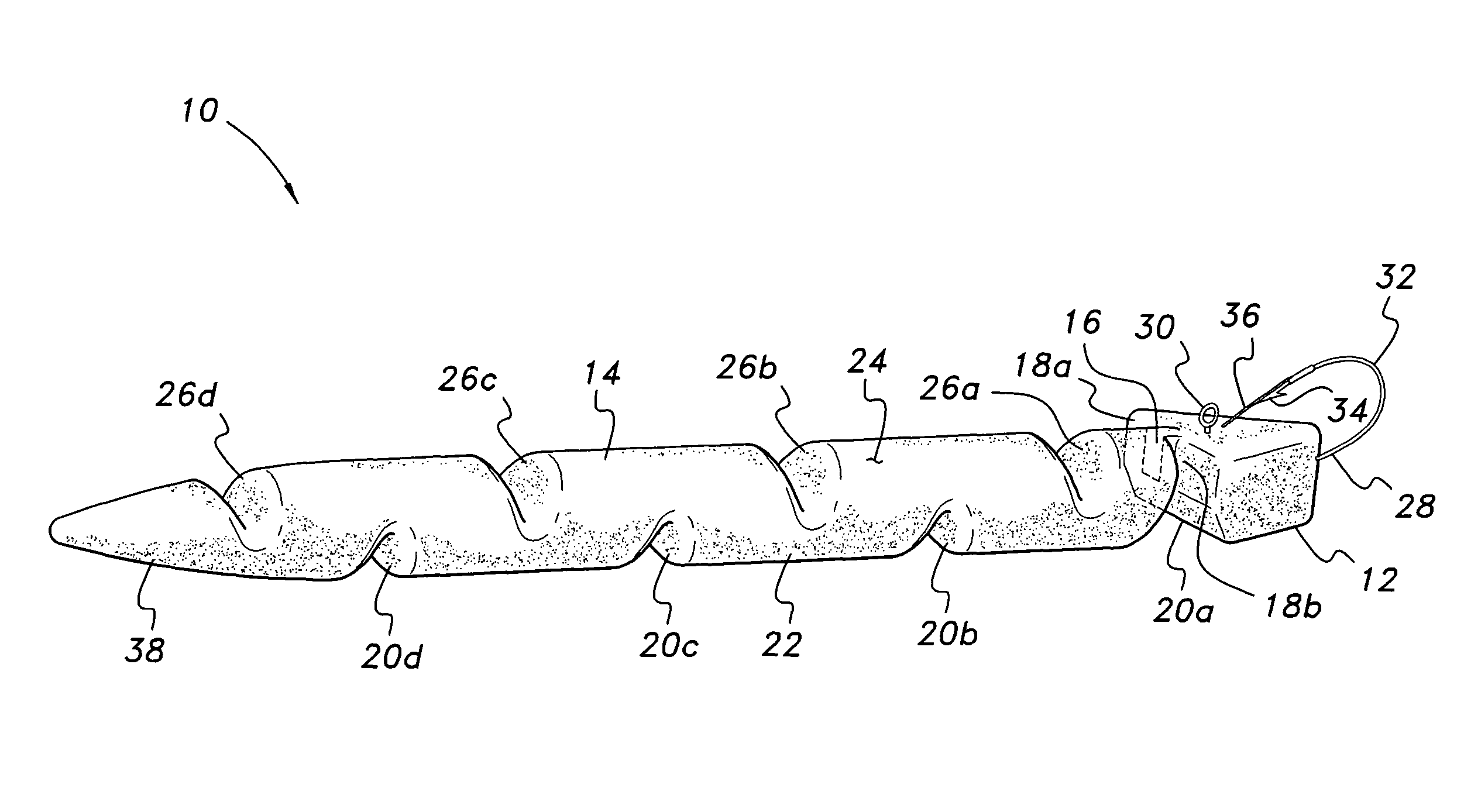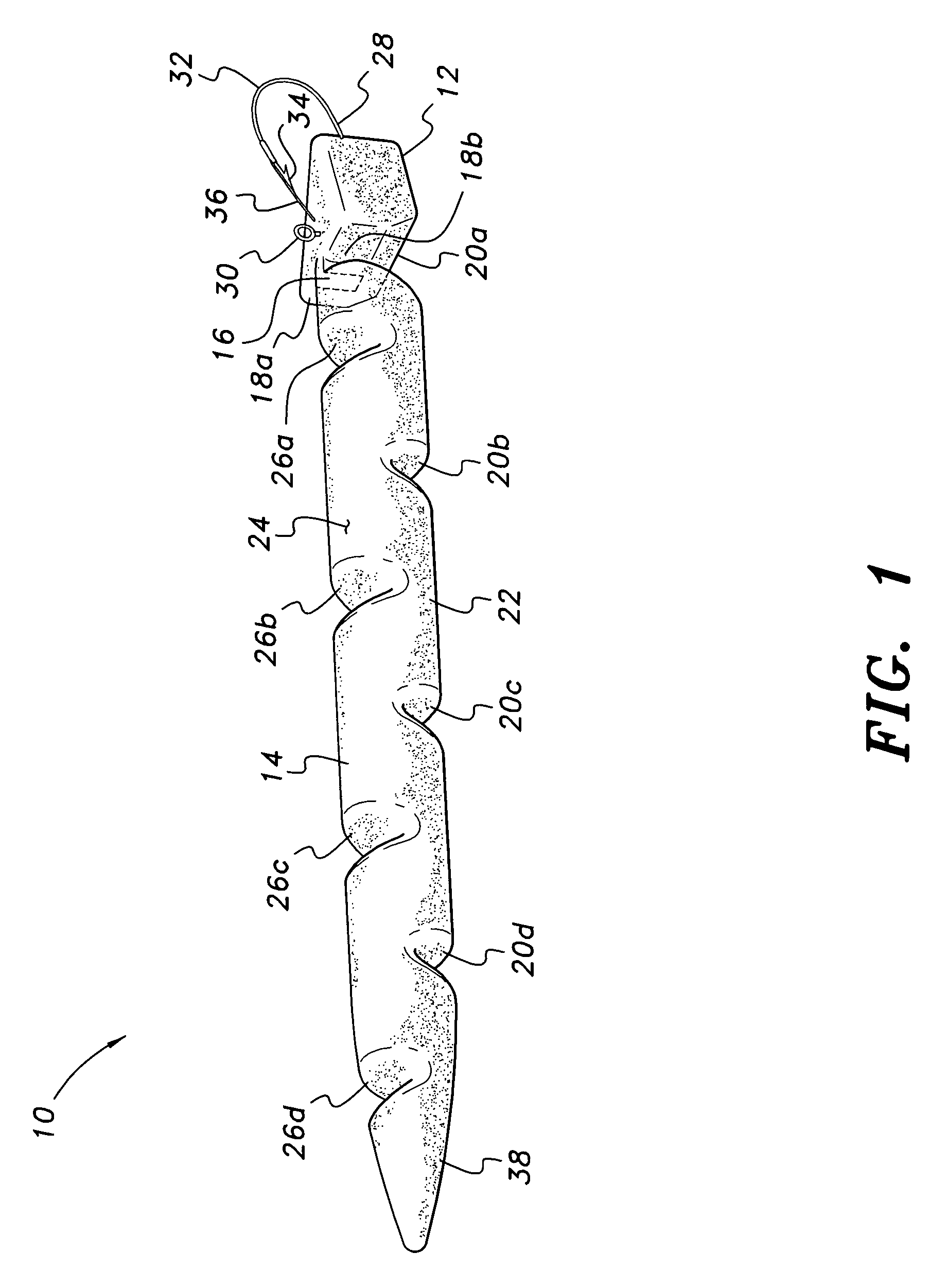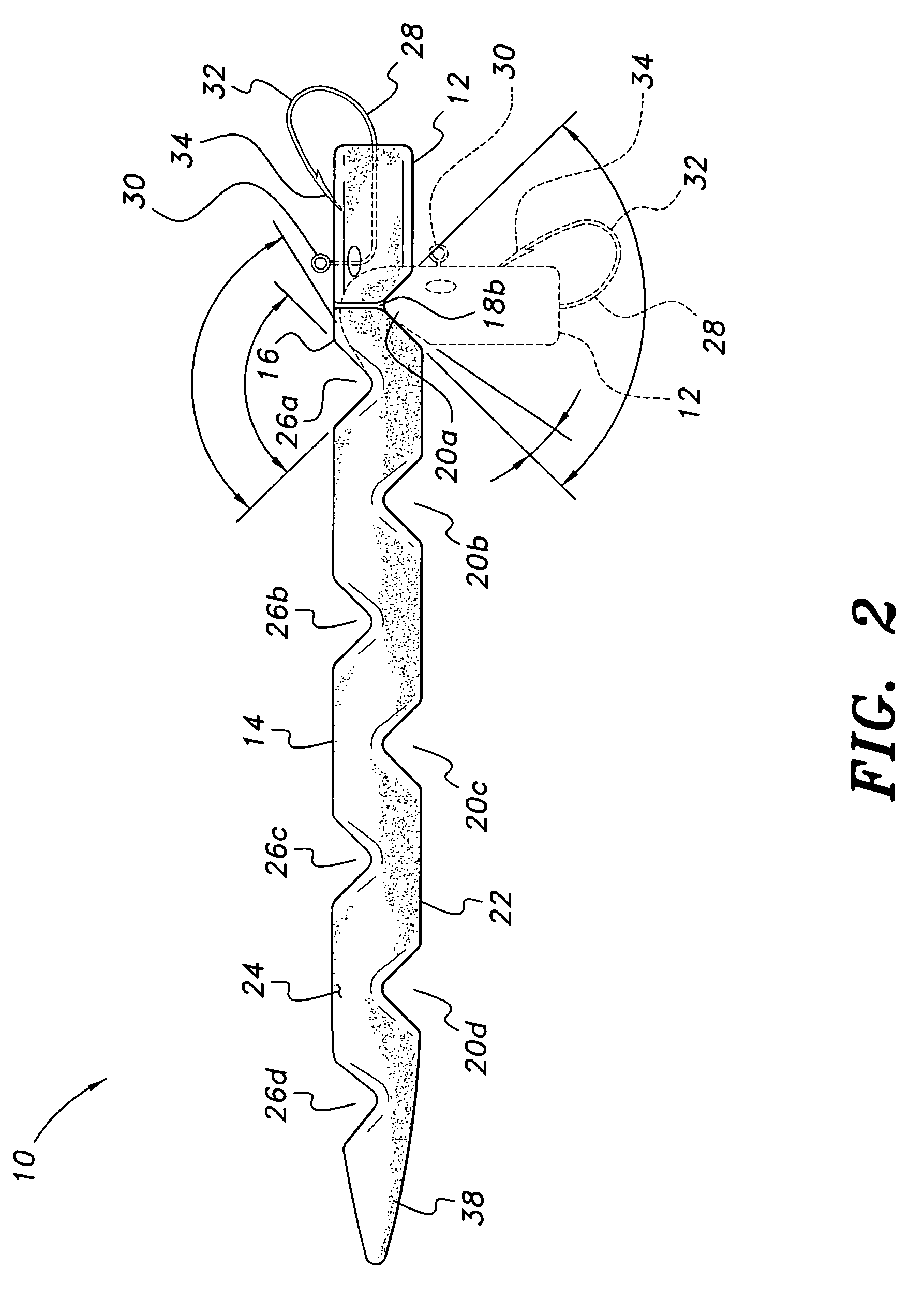Fishing lure
a technology of lures and lures, applied in the field of fishing tackle, can solve the problems of the head being forced down at an angle to the body, and achieve the effect of real movement and increased flexibility of the lur
- Summary
- Abstract
- Description
- Claims
- Application Information
AI Technical Summary
Benefits of technology
Problems solved by technology
Method used
Image
Examples
Embodiment Construction
The fishing lure is formed of a soft, resilient plastic material (e.g., plastisol or other suitable material). The density of the plastisol or other material may be adjusted as desired during manufacture to provide greater or lesser specific gravity than water for the desired effect. A lure having a specific gravity or density greater than water will sink, while a lure with a density less than that of water will float. These different densities may be selected by the angler, as desired, depending upon his or her sense of the likelihood of the subject fish taking a lure on the surface or at some depth below the surface.
Each of the embodiments of the lure includes mutually opposed, laterally spaced vertical notches or grooves between the head portion and neck portion, and a plurality of longitudinally staggered, laterally disposed grooves or notches along the upper and lower surfaces of the body and / or tail portion(s). The hook extends forwardly from the head portion of the lure in ea...
PUM
 Login to View More
Login to View More Abstract
Description
Claims
Application Information
 Login to View More
Login to View More - R&D
- Intellectual Property
- Life Sciences
- Materials
- Tech Scout
- Unparalleled Data Quality
- Higher Quality Content
- 60% Fewer Hallucinations
Browse by: Latest US Patents, China's latest patents, Technical Efficacy Thesaurus, Application Domain, Technology Topic, Popular Technical Reports.
© 2025 PatSnap. All rights reserved.Legal|Privacy policy|Modern Slavery Act Transparency Statement|Sitemap|About US| Contact US: help@patsnap.com



